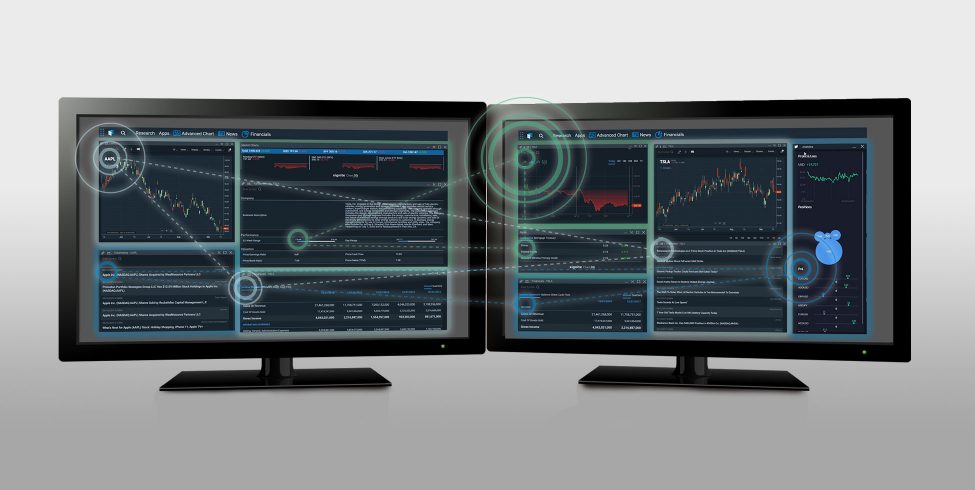With the “Smart Desktop” coming to the forefront in capital markets, client firms and the press are focusing more and more on interoperability solutions like interop.io and other offerings, such as OpenFin. That’s a good thing, of course—a rising tide lifts all ships—and we think the category has much to offer the industry. That said, I’m starting to notice commentary about how smart desktop technology is out to destroy incumbents to make room for itself. That’s fundamentally at odds with our perspective.
First off, what is a Smart Desktop?
To us, a Smart Desktop means all the applications you use work seamlessly together. Pretty simple, right?
Think about your desktop now—a dozen browser tabs open with applications that don’t communicate, your core market data terminal and OMS/EMS platform launched separately, a handful of in-house developed or niche desktop applications floating around the edges. That’s a chaotic, fragmented, inefficient desktop. Smart Desktop technology brings these all together—in-house and third party, native and HTML5—and lets you control how they share information and work together.
Work with—not against—incumbents.
The traditional narrative is that every innovative upstart wants to disrupt the industry and kill off the incumbents, but a philosophical difference at interop.io stops us from making that our mission. We believe replacing a monolith with a newer monolith doesn’t change anything, it just shifts the power (and revenue). It’s in our best interest to make the Bloomberg Terminal, Eikon and the other desktop incumbents more valuable by leveraging their APIs like Bloomberg’s Terminal Connect. It’s the same idea with all the other applications you use, too. Learn more about io.Connect adapters.
The difference between a good app and a great app is how well it works with others (more on FDC3 here). Applications that exist in silos don’t benefit the end user. Applications and frameworks that aren’t working to solve the problem of fragmented desktop environments are not advancing innovation in today’s financial industry.
A rogue agent—out for the kill—is going nowhere.
Incumbents who get it.
Bloomberg has been diversifying third-party apps available via its Bloomberg App Portal since 2012. Users benefit, and appreciate, having access to a library of financial tools, and if those tools can interoperate, that’s even better. In this A-Team Insight article, Mike King, global business head for the Bloomberg App Portal, said “Interoperability is now becoming not just nice to have, but a must have.” I couldn’t have said it better myself.
If you’re a vendor building an application or component, interoperability is an opportunity, not a threat. If you let your customers integrate your software with the other software of their choosing (in ways you can’t predict) they’ll get more value out of it, and it will be deeper embedded into their workflows as a result. You don’t need to be all things to all users, in fact, you can stop building the things around the edge of your product that just check a box, and focus on your core differentiators. That’s good for everyone.
Take control of your own desktop.
Giving firms and their end users the choice to pick whichever applications they want, feel empowered by new technology, and build applications in whatever technology suits them is our goal. The future of the desktop is firms and their users assembling workspaces in ways vendors can’t imagine.
Back in the 1990s, BASF used the tagline: “We don’t make the products you buy, we make the products you buy better.” That’s the way I think of interop.io: We don’t make the apps you buy, we make the apps you buy better.
Last Updated on September 15, 2023

